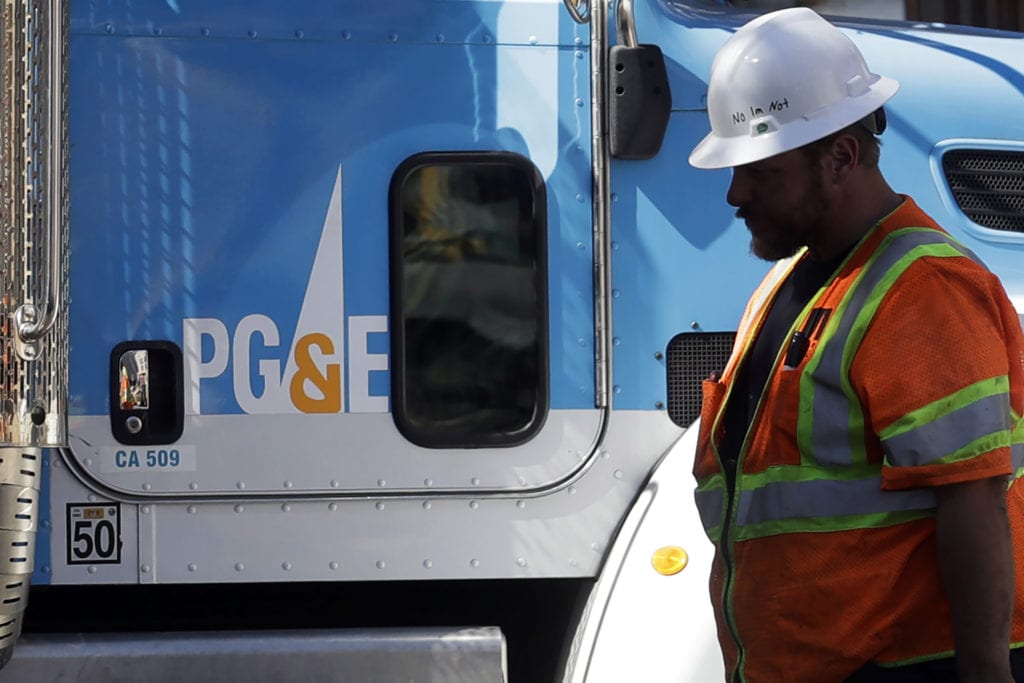As thousands of people lost power in San Jose during a scorching August heat wave, Mayor Sam Liccardo condemned PG&E for having aging infrastructure and accused them of lying.
“You are hearing messages from PG&E suggesting over the last several days we have been suffering from rolling blackouts prompted by decisions from the California Independent System Operator. I do not believe that is true,” Liccardo said during a Facebook livestream. “What we have been suffering from, particular in the Southern part of our city, are extended blackouts that result from the inability of the PG&E infrastructure, the grid, to operate in this heat.”
Liccardo even touted himself as California’s harshest critic of PG&E.
But despite the scathing words, the mayor’s plans to strip PG&E’s hold on San Jose’s energy supply and convert its power grids into a customer-owned co-op ultimately fell short.
“We didn’t prevail,” Liccardo told San José Spotlight in a recent interview. “We had opportunity in (PG&E’s) bankruptcy to try to persuade the political stakeholders to choose a different path and we did not succeed.”
In June, a bankruptcy judge accepted PG&E’s $58 billion plan to exit bankruptcy, which stopped Liccardo’s plans in its tracks.
The mayor’s proposal, despite garnering support from more than 20 mayors across the state, already faced many hurdles.
“We had more than 200 local officials, mayors, councilmembers, but no one had delusions about the fact that this would be hard,” Liccardo said.
But not everybody was on board, the mayor explained.
“It really is because there’s so many stakeholders with very strong interests around the table,” Liccardo said. “You’ve got bond holders, you’ve got shareholders, you’ve got PG&E executives, you’ve got unions, you’ve got all these folks exerting a pull and I think the frustration for many of us is the rate payers are not represented very well, in fact they’re not represented at all.”
The bankrupted PG&E shot back at the mayor’s plan and said it was not in the best interest of its customers.
“We remain firmly convinced that a government or customer takeover is not the optimal solution that will address the challenges and serve the long-run interests of all customers in the communities we serve,” said PG&E spokesman James Noonan in a statement. “We remain focused on the safety of our customers and communities and will continue working together with our state and local government partners and across all sectors and disciplines to develop comprehensive, long-term safety and energy solutions for the future.”

But energy experts say transitioning power to San Jose and developing self-sustaining energy grids would ease power needs for other cities.
“There’s a bottleneck in the transmission corridor that comes through San Jose,” said Daniel Kammen, an energy professor at UC Berkeley. “For more of San Jose to be self reliant on power, probably by batteries and solar and by converting more and more vehicles to electric vehicles, you reduce the stress for the rest of the Bay Area, because more power can come in to San Francisco and San Jose can become a green energy island.”
Kammen said it’s still feasible to develop a customer-owned co-op. In fact, it would be easier to lay out power in cities like San Jose with more infrastructure and people packed together — unlike a rural area.
“The way to do that is to invest in green energy, and specifically target it around environmental justice,” Kammen said. “The state of California government is behind that plan.”
But to get California’s backing, local leaders would be beholden to state funding, Kammen said, and whoever is in charge of laying out the infrastructure would need to ensure transparency.
“If the city goes in for mini-grid funding from the state, then you really have to have a very transparent process to pick the first pilot communities,” he said. “Why were certain ones picked over others? But if at least one of the communities is a low-income residential area, no one can really argue with that.”
The state has a plan for California’s energy supply if PG&E goes bust.
Gov. Gavin Newsom signed Senate Bill 350, which would allow the state to reorganize PG&E into a nonprofit if the company stays in bankruptcy or fails to meet public safety standards.
However, Liccardo said he is wary of allowing PG&E’s energy supply to be under the control of state government officials, rather than California residents.
The mayor says it’s a partial victory because the state’s plan includes some of his proposed reforms and his efforts to transition the company to a customer-owned co-op are not dead.
“We’re not going away,” Liccardo said. “We’ve organized ourselves. We’ve clearly got traction from the public. We’re going to be holding PG&E accountable.”
Contact Mauricio La Plante at [email protected] or follow @mslaplantenews on Twitter.



Leave a Reply
You must be logged in to post a comment.